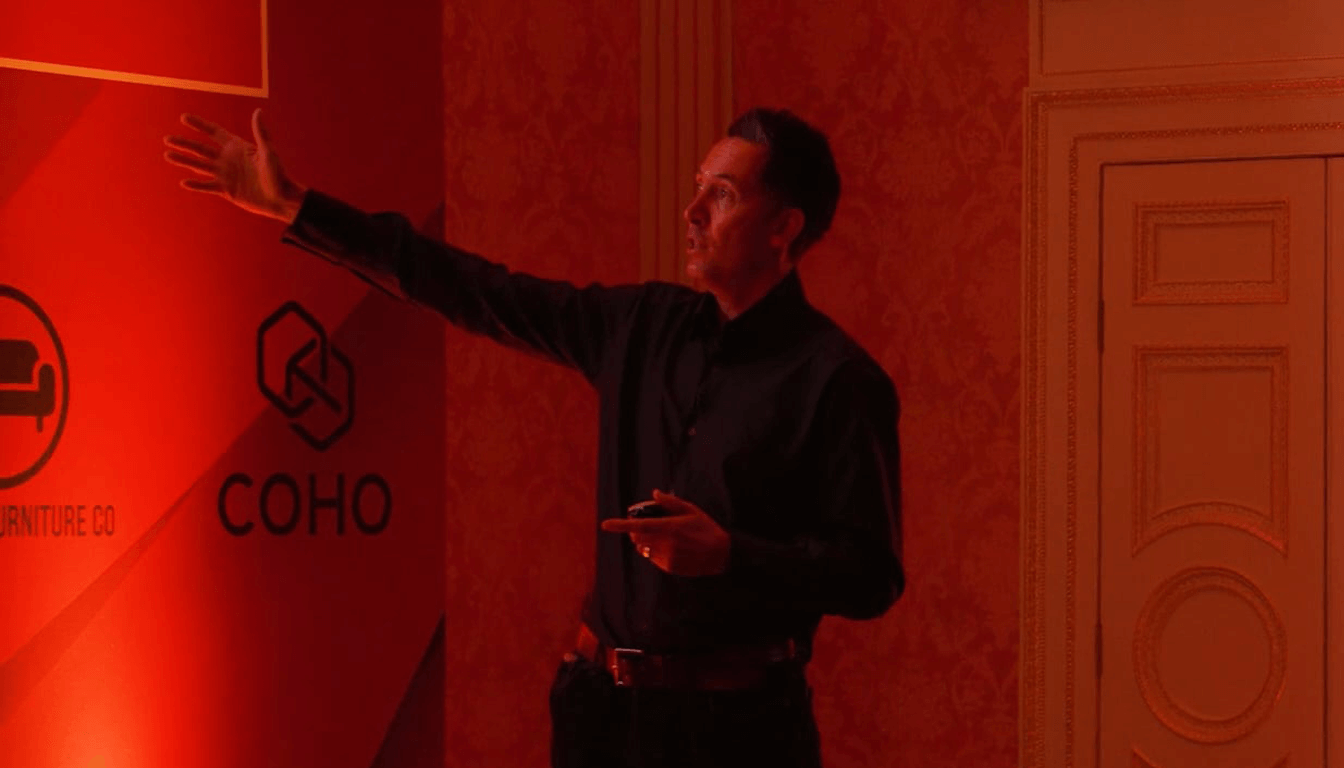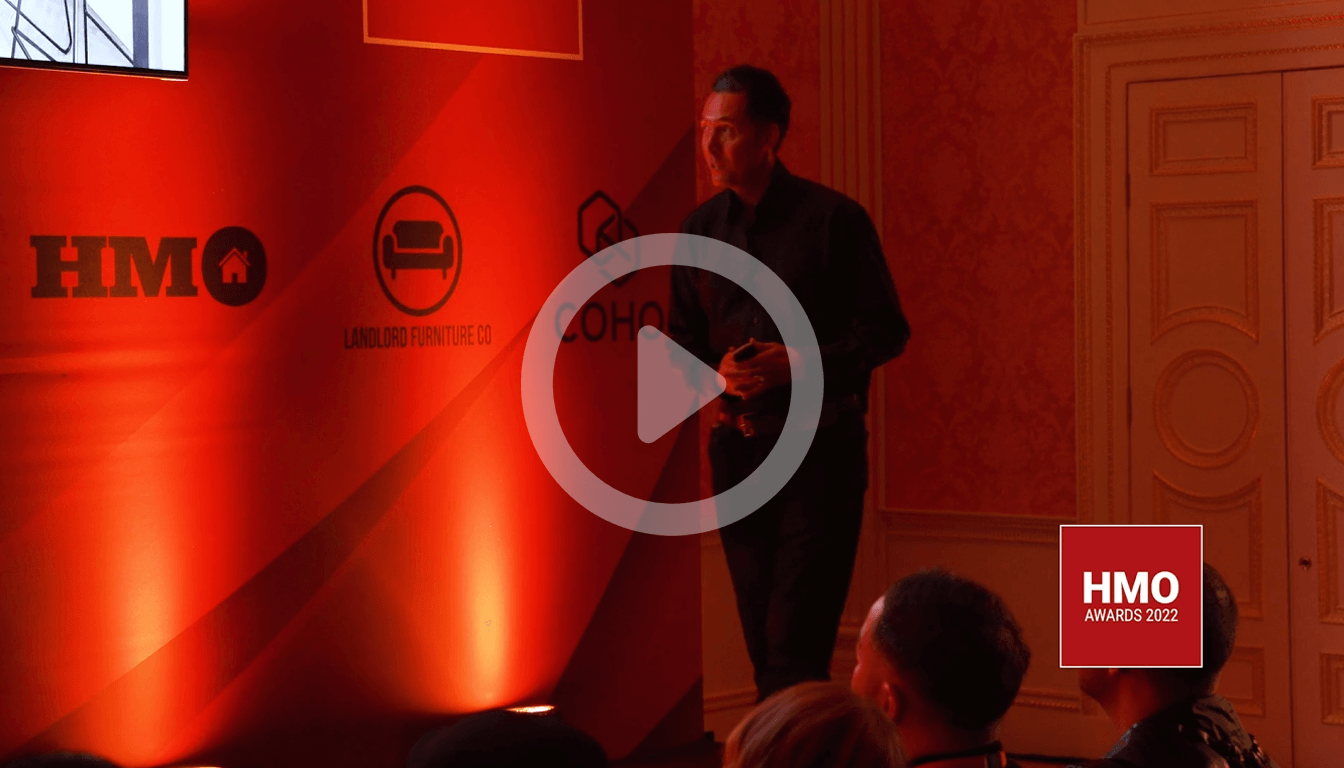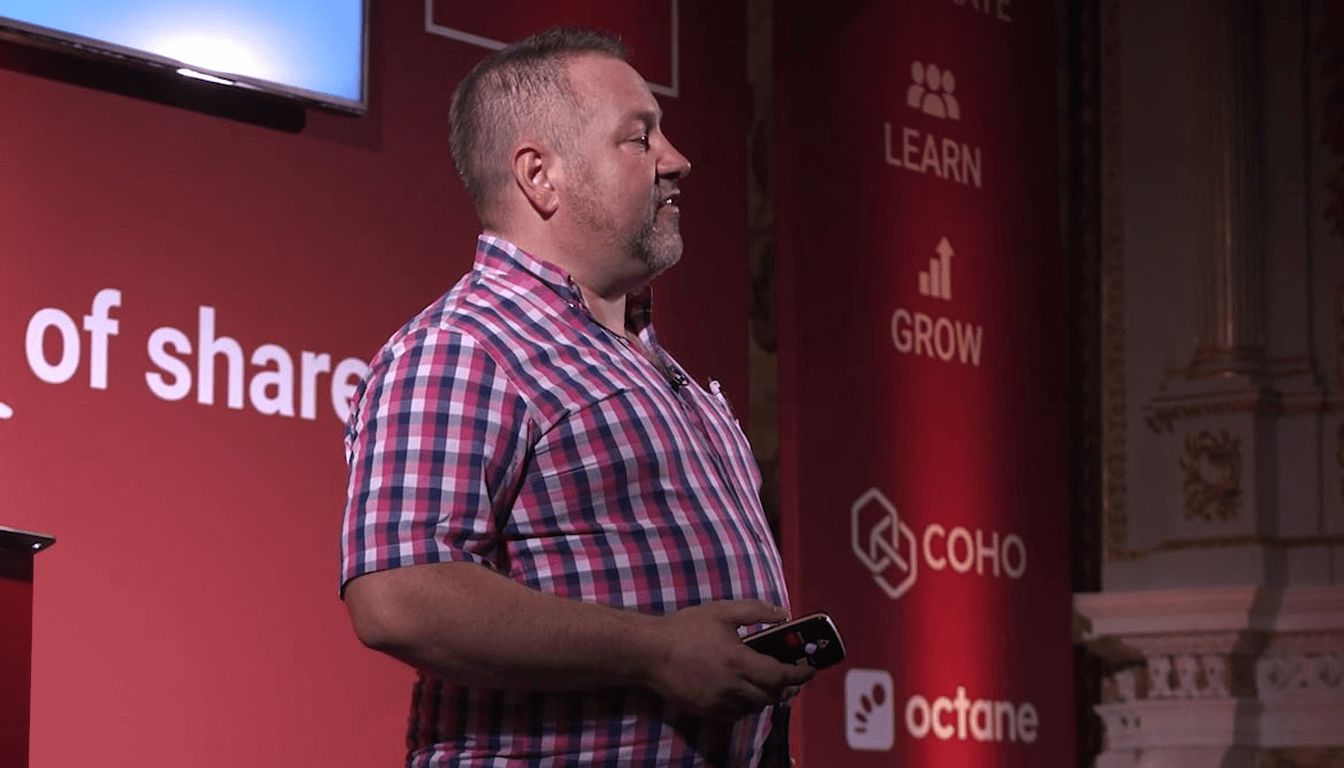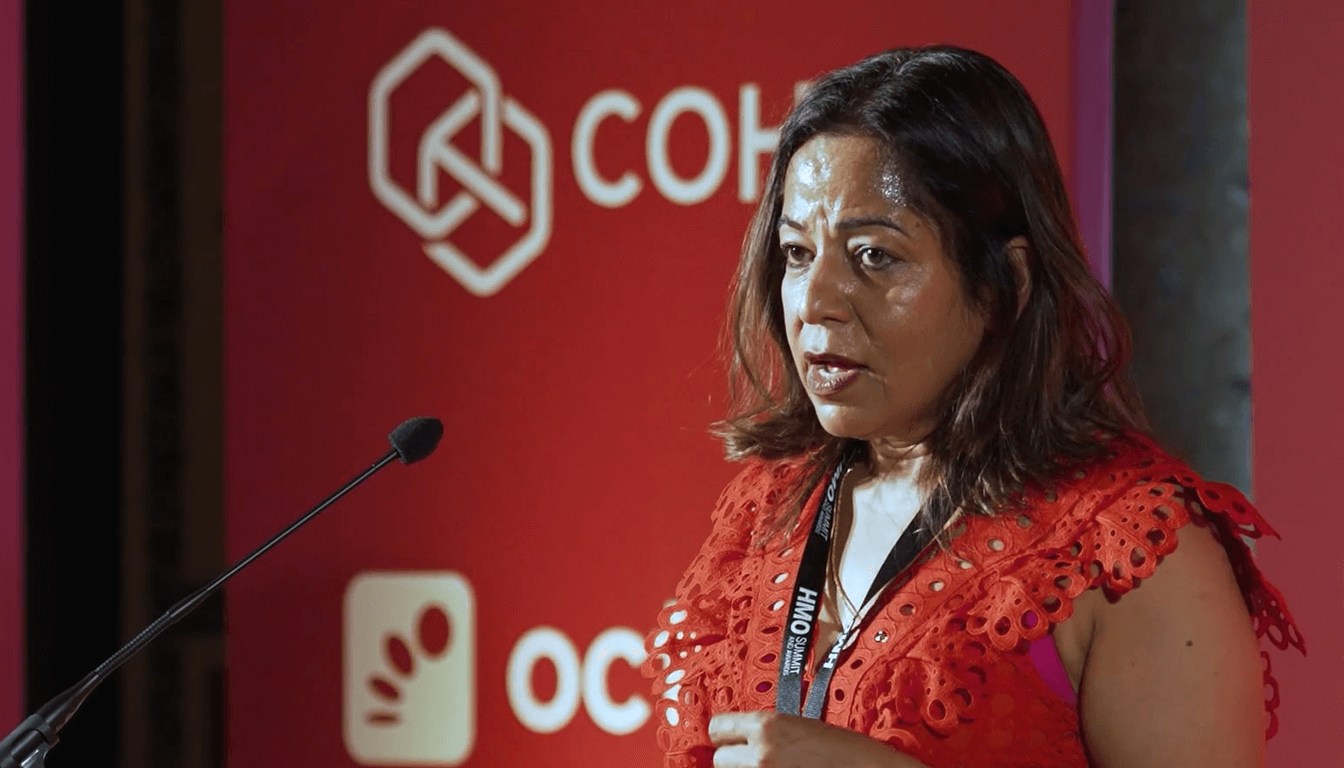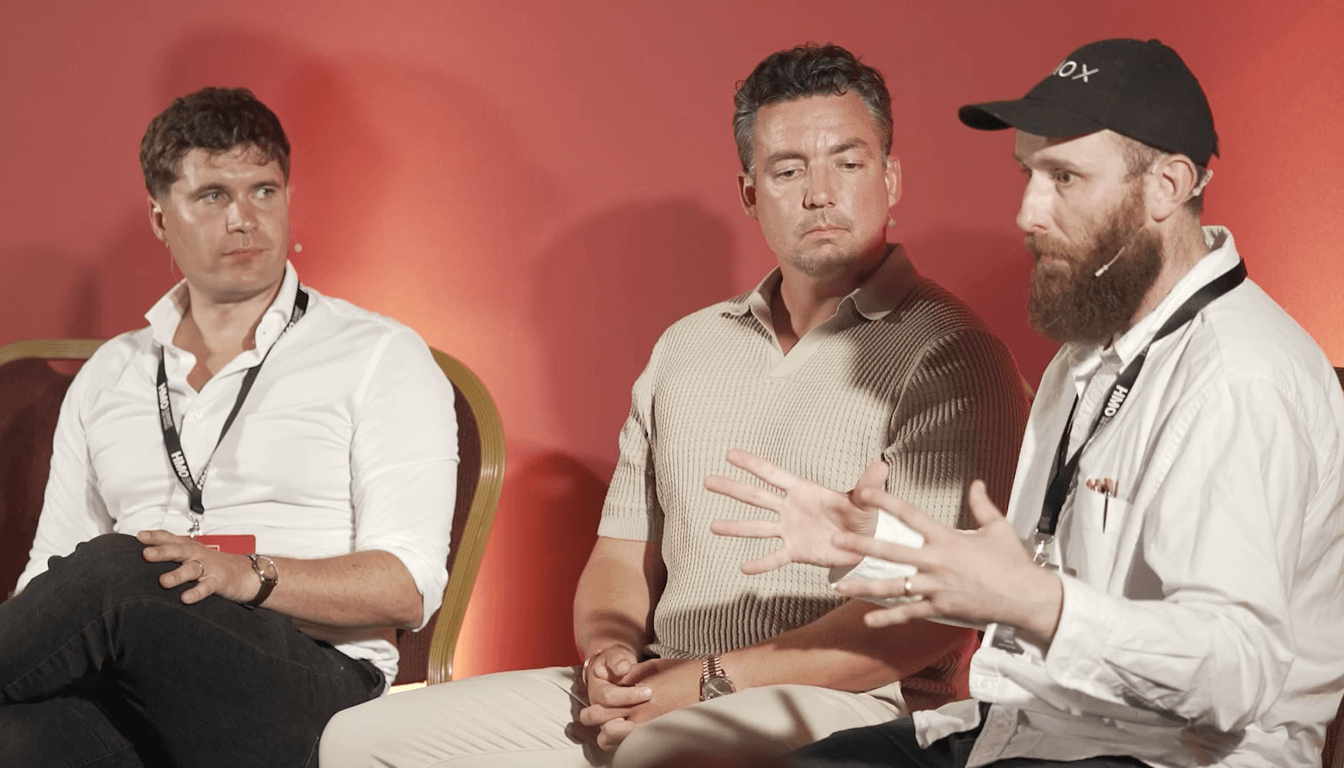In an increasingly competitive rental market, especially for HMO (House in Multiple Occupation) operators, the margin between mediocrity and profitability lies in design. Stuart Scott, a seasoned designer-turned-property-developer, shared his top 3 HMO design strategies at the 2022 HMO Awards hosted by COHO.
With over two decades of experience leading design and innovation teams across global brands, Stuart now applies the same creative principles to property development—bringing a fresh, user-first, and highly profitable approach to shared living.
This blog unpacks his actionable advice on product innovation, usability, and brand experience—each rooted in real experiments and design thinking.
Lesson from Kodak & Sony — Why Innovation Is Non-Negotiable
Stuart opens his talk with cautionary tales: Kodak invented digital photography but buried it to protect film sales. Sony, once dominant, ignored software and lost the MP3 war. The point? Complacency kills innovation—and profits.
The same applies to HMO landlords. A decade-old product might have worked once, but tenant expectations evolve. If you’re not upgrading, someone else is—and tenants will vote with their feet.
Constant Product Innovation: Your #1 Profit Lever
Stuart’s first and perhaps most powerful tip is constant product innovation. This doesn’t mean a full property overhaul with every project—it means experimenting, iterating, and learning. Every HMO development should include micro-experiments, from material durability tests to amenity usage studies.
For example, Stuart introduced coworking spaces in his HMOs back in 2015—years ahead of the remote work boom. Post-COVID, his properties were uniquely positioned. He didn’t wait for the market to change; he anticipated it.
Other experiments have included:
- Small garden hammocks (low cost, high delight)
- Unused hallway nooks turned into private breakout spaces
- Modular furniture and niche utility setups
Even when tenants don’t explicitly ask for these features, their usage data and behaviour become feedback loops that fuel constant improvement.
Takeaway: Break the box. Push boundaries. Vanilla doesn’t sell at a premium.
Usability Design > Aesthetic Design
Stuart’s second principle: Usability beats aesthetics when it comes to long-term retention.
Form Should Follow Function
Take kitchen bars, for instance—common in glossy listing photos. They look great. But as Stuart rightly asks: When was the last time you had a meaningful dinner with someone while sitting in a line?
Kitchen bars are photogenic but often impractical if they are the only dining solution. This mistake leads to tenant dissatisfaction and, more dangerously, churn—a silent profit killer.
Reduce Churn with Practical Design
High tenant turnover increases acquisition costs and often means you’re starting relationships from scratch. Good usability design reduces churn by making the home livable, not just beautiful. If you’re relying on agencies to fill your rooms, keep in mind: they profit from churn—you don’t.
Stuart’s team regularly surveys tenants to ask:
- What features did you love?
- What didn’t work?
- What would make you stay longer?
They then feed this data into the next round of design experiments, creating a constant cycle of learn > test > build > learn.
Takeaway: Don’t design just for photos—design for lived experience. Tenants notice.
Build a Brand Experience, Not Just a Room
The third strategy? Control the customer journey—from research to retention.
Think Like Apple
Apple created its retail stores not just to sell more Macs, but to own the full customer journey: research, trial, purchase, and support. Stuart urges HMO operators to apply the same principle.
Map Every Touchpoint
In the HMO world, touchpoints might include:
- SpareRoom listings (research)
- Communication with agent or landlord (first impression)
- Viewings and onboarding (initial trust-building)
- Move-in experience (first-day usability)
- Community and common spaces (long-term stickiness)
If you’re only focused on the product build, you’re missing two-thirds of the tenant experience.
Brand Experience = Premium Pricing + Lower Vacancy
When tenants experience smooth onboarding, beautiful but functional rooms, and a coherent brand across all touchpoints, they stay longer—and pay more. It’s what Stuart calls “smart design thinking applied to real estate.”
Takeaway: Your brand is more than your logo—it’s every interaction a tenant has with you.
Micro Experiments Create Macro Wins
One of the most powerful reframes in Stuart’s talk is the idea of micro experiments.
Whether it’s trying hammocks in the garden, sketching new room layouts from scratch, or placing a printer in the coworking zone, small bets add up. Not all experiments work—but the learnings always do.
Some practical examples:
- Create sketchbooks or moodboards from scratch, not just Pinterest
- Add “awkward” hallway spaces to usable plans
- Build living prototypes and test tenant interaction
- Regularly revisit design assumptions (like whether all tenants want a TV)
This iterative model drives innovation and long-term returns, especially in saturated or price-sensitive markets.
Profitability Is Designed, Not Discovered
To sum up, the most profitable HMOs today are not just well built—they are well designed. Design, in Stuart Scott’s world, is not just about visuals. It’s a strategic tool for:
- Driving higher rents
- Reducing tenant turnover
- Standing out in a saturated market
- Future-proofing your product
Final Tips:
- Run at least one new design experiment per property
- Think deeply about usability—not just style
- Map and optimize every customer touchpoint
- Keep innovating before competitors catch up
As Stuart says, “We know how to make things look good. But the small usability details—that’s what drives long-term occupancy and cash flow.”
To learn more, check out Stuart’s book The Co-Living Revolution on Amazon, or visit his website for resources and training.
In an increasingly competitive rental market, especially for HMO (House in Multiple Occupation) operators, the margin between mediocrity and profitability lies in design. Stuart Scott, a seasoned designer-turned-property-developer, shared his top 3 HMO design strategies at the 2022 HMO Awards hosted by COHO.
With over two decades of experience leading design and innovation teams across global brands, Stuart now applies the same creative principles to property development—bringing a fresh, user-first, and highly profitable approach to shared living.
This blog unpacks his actionable advice on product innovation, usability, and brand experience—each rooted in real experiments and design thinking.
Lesson from Kodak & Sony — Why Innovation Is Non-Negotiable
Stuart opens his talk with cautionary tales: Kodak invented digital photography but buried it to protect film sales. Sony, once dominant, ignored software and lost the MP3 war. The point? Complacency kills innovation—and profits.
The same applies to HMO landlords. A decade-old product might have worked once, but tenant expectations evolve. If you’re not upgrading, someone else is—and tenants will vote with their feet.
Constant Product Innovation: Your #1 Profit Lever
Stuart’s first and perhaps most powerful tip is constant product innovation. This doesn’t mean a full property overhaul with every project—it means experimenting, iterating, and learning. Every HMO development should include micro-experiments, from material durability tests to amenity usage studies.
For example, Stuart introduced coworking spaces in his HMOs back in 2015—years ahead of the remote work boom. Post-COVID, his properties were uniquely positioned. He didn’t wait for the market to change; he anticipated it.
Other experiments have included:
- Small garden hammocks (low cost, high delight)
- Unused hallway nooks turned into private breakout spaces
- Modular furniture and niche utility setups
Even when tenants don’t explicitly ask for these features, their usage data and behaviour become feedback loops that fuel constant improvement.
Takeaway: Break the box. Push boundaries. Vanilla doesn’t sell at a premium.
Usability Design > Aesthetic Design
Stuart’s second principle: Usability beats aesthetics when it comes to long-term retention.
Form Should Follow Function
Take kitchen bars, for instance—common in glossy listing photos. They look great. But as Stuart rightly asks: When was the last time you had a meaningful dinner with someone while sitting in a line?
Kitchen bars are photogenic but often impractical if they are the only dining solution. This mistake leads to tenant dissatisfaction and, more dangerously, churn—a silent profit killer.
Reduce Churn with Practical Design
High tenant turnover increases acquisition costs and often means you’re starting relationships from scratch. Good usability design reduces churn by making the home livable, not just beautiful. If you’re relying on agencies to fill your rooms, keep in mind: they profit from churn—you don’t.
Stuart’s team regularly surveys tenants to ask:
- What features did you love?
- What didn’t work?
- What would make you stay longer?
They then feed this data into the next round of design experiments, creating a constant cycle of learn > test > build > learn.
Takeaway: Don’t design just for photos—design for lived experience. Tenants notice.
Build a Brand Experience, Not Just a Room
The third strategy? Control the customer journey—from research to retention.
Think Like Apple
Apple created its retail stores not just to sell more Macs, but to own the full customer journey: research, trial, purchase, and support. Stuart urges HMO operators to apply the same principle.
Map Every Touchpoint
In the HMO world, touchpoints might include:
- SpareRoom listings (research)
- Communication with agent or landlord (first impression)
- Viewings and onboarding (initial trust-building)
- Move-in experience (first-day usability)
- Community and common spaces (long-term stickiness)
If you’re only focused on the product build, you’re missing two-thirds of the tenant experience.
Brand Experience = Premium Pricing + Lower Vacancy
When tenants experience smooth onboarding, beautiful but functional rooms, and a coherent brand across all touchpoints, they stay longer—and pay more. It’s what Stuart calls “smart design thinking applied to real estate.”
Takeaway: Your brand is more than your logo—it’s every interaction a tenant has with you.
Micro Experiments Create Macro Wins
One of the most powerful reframes in Stuart’s talk is the idea of micro experiments.
Whether it’s trying hammocks in the garden, sketching new room layouts from scratch, or placing a printer in the coworking zone, small bets add up. Not all experiments work—but the learnings always do.
Some practical examples:
- Create sketchbooks or moodboards from scratch, not just Pinterest
- Add “awkward” hallway spaces to usable plans
- Build living prototypes and test tenant interaction
- Regularly revisit design assumptions (like whether all tenants want a TV)
This iterative model drives innovation and long-term returns, especially in saturated or price-sensitive markets.
Profitability Is Designed, Not Discovered
To sum up, the most profitable HMOs today are not just well built—they are well designed. Design, in Stuart Scott’s world, is not just about visuals. It’s a strategic tool for:
- Driving higher rents
- Reducing tenant turnover
- Standing out in a saturated market
- Future-proofing your product
Final Tips:
- Run at least one new design experiment per property
- Think deeply about usability—not just style
- Map and optimize every customer touchpoint
- Keep innovating before competitors catch up
As Stuart says, “We know how to make things look good. But the small usability details—that’s what drives long-term occupancy and cash flow.”
To learn more, check out Stuart’s book The Co-Living Revolution on Amazon, or visit his website for resources and training.

